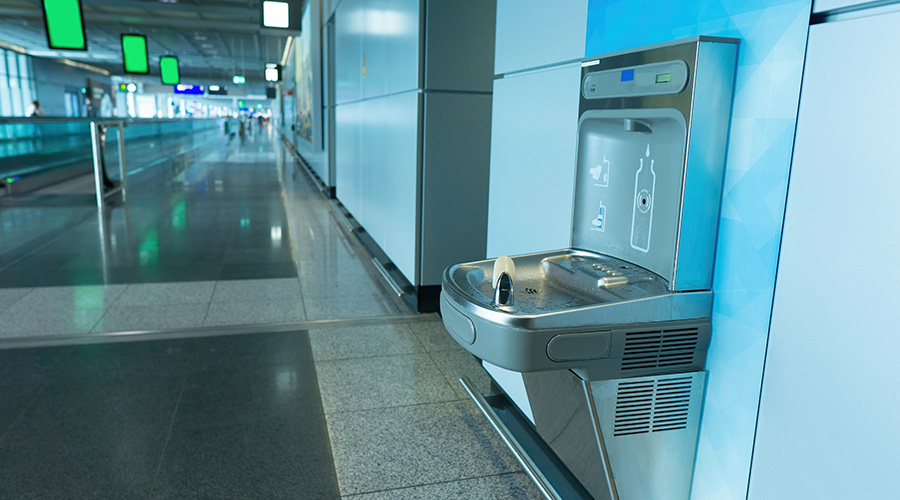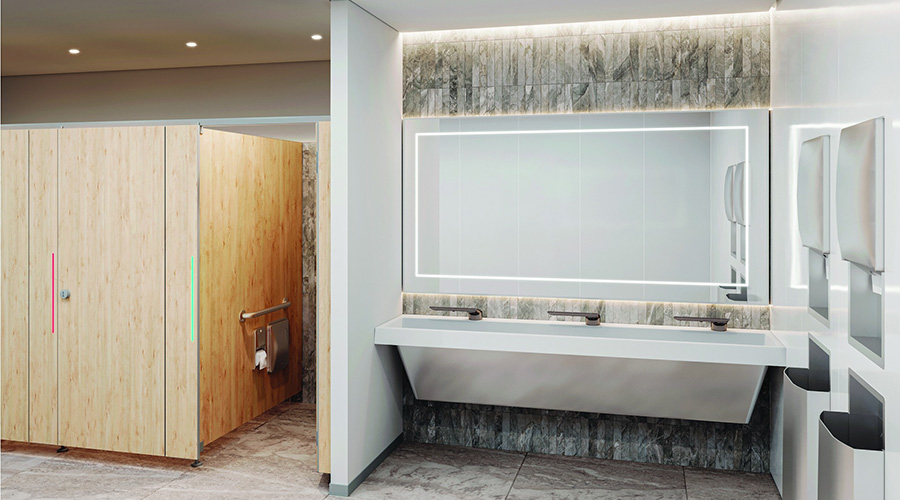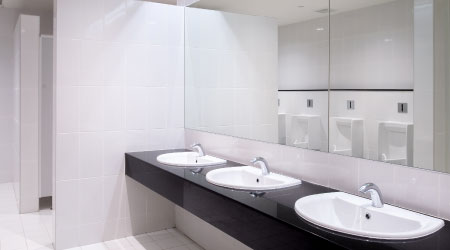Sustainable Restrooms: Match Products to Facility Needs
How much could end users and their facilities benefit from learning more about specifying restroom products with sustainability in mind? If you ask some manufacturers of these products, the answer is more. Much more.
Obviously, managers are the in-house experts on all matters related to the daily challenges of maintenance and housekeeping in institutional and commercial buildings. But many managers have a ways to go before they get the full benefit of new-generation restroom products designed to improve sustainability, according to manufacturers of items such as paper products, dispensers, partitions, and hand dryers.
Here is the issue: Discussions of specifying products to improve sustainability too often center only on the products’ initial cost or changes in the way products are manufactured. Manufacturers acknowledge cost and changes in materials and packaging are important but stress they are only part of the story.
What matters as much, if not more, is how successfully managers are able to match these products to their facilities’ unique needs.
“Sustainability is about making the right product selection — having a thorough understanding of the applications and how you intend to use the products and how you’re going to maintain them,” says Stephen Merrill, national sales manager for ASI Group, maker of towel and soap dispensers and waste receptacles, among other products. “What it is, is education, getting people to use the correct products.”
Roadblocks to Sustainability
Using the right products will go a long way in helping managers achieve their sustainability goals, but several major roadblocks often get in the way of such efforts.
Consider managers’ workloads. Given the increasing complexity of facilities and the ever-expanding product options managers must investigate, it is understandable some product selections fail because managers relied on what they had always done in specifying restroom products.
“Sometimes, people simply specify a product they have always been using —for example, a multi-fold towel,” says Mike Kapalko, SCA Tissue’s environmental and Tork services manager. “It may have a lower case cost, but by switching to a mechanical, hands-free, hard-wound, roll-towel system, a building can improve hygiene, image, and cost-in-use, due to the benefits of controlled consumption and waste reduction. It is important to look at all factors to find a complete solution.”
In other cases, products that fail to live up to expectations for sustainability and other issues often do so because of a lack of communication during the facility’s planning and design.
“The architect specifies the products for the washroom with no communication with the building owner or manager on things like paper use or cleaning,” Merrill says.
Of course, cost dictates many of the decisions managers make in selecting products for their facilities’ restrooms. Their intentions might be good, and they did their homework, but the bottom line often rules in the end.
“Unfortunately, a lot of the decisions are driven by price and value engineering,” Merrill says.
Related Topics:













